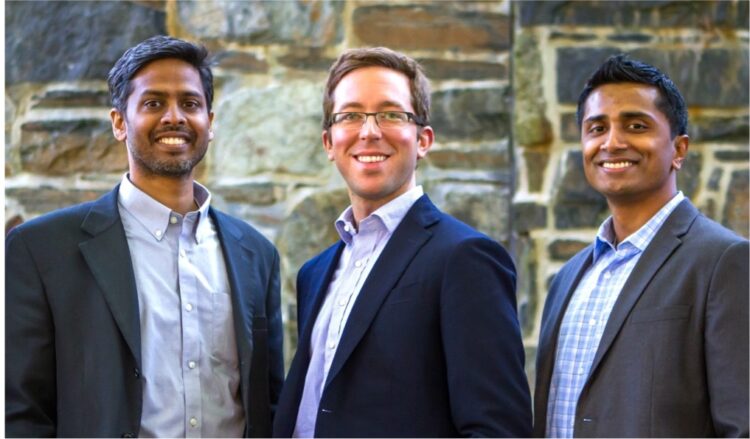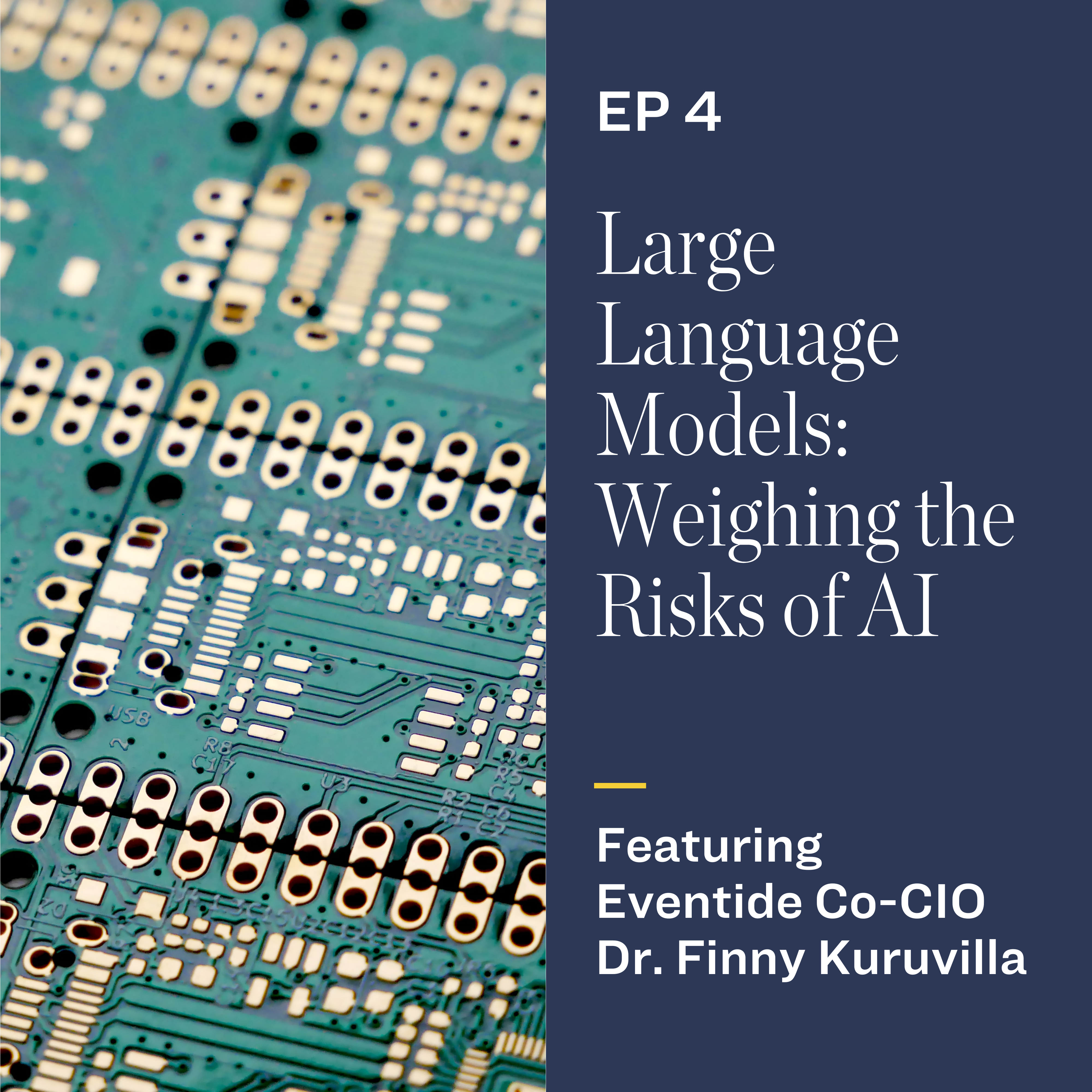Shaun Morgan: Welcome to the Invest By Design podcast. I’m Shaun Morgan, the Director of Education at Eventide. At Invest By Design, we use stories to pull back the curtain on how markets, industries, and economies work so that you can better understand the complicated world of investing. Our hope is that as investing becomes less of a mystery, you’ll understand how important it is to be intentional about how you invest, not only for your own financial goals but for the wellbeing of others around you.
Whether you are an individual investor looking to invest in the stock market or you’re a financial professional performing due diligence on an investment manager, you’ll ask this question, how do you decide if a stock will be a good investment? This is the most basic question of investing and generally at risk of oversimplification. I found that investors’ answers to this question fall into one of three categories. The first category believes that no one can answer this question, that trying to pick which individual stocks will perform better than others is impossible. This answer leads investors to simply buy the entire market or entire portions of the market through low cost index funds. The second category believes that there is some predictability if you look at the objective metrics and the tangible assets of a stock, like comparing the stock price to its earnings. But come to find out, this objective data can be examined and organized by computers.
So human stock analysts that only use spreadsheets of this tangible data often come to the same conclusions and invest in the same stocks as computers. But since human research costs more to do, the humans after they take their fees could underperform the computers. So in modern day investing where there are hundreds of thousands of investors all looking at the same data, how does any investor have any advantage over another? After all, if you want to invest in a stock at a good price, you have to see something in that stock right now that other investors won’t realize until later in 2020, an advisory group named Ocean Tomo measured how much value in the S&P 500 was found in a company’s intangible assets, the assets of a business that you can’t physically touch, like intellectual property and patents, and more qualitative aspects like brand value, goodwill, and quality leadership.1
The study found that over four and a half decades, the majority of the value in the S&P 500 had shifted from tangible assets to intangible assets. In fact, in 1975, intangible assets only accounted for 17% of the S&P 500’s market value. In 2020, that number was 90%. In this episode, I interview Dolores Bamford, who is the Co-Chief Investment Officer and Senior Portfolio Manager at Eventide. She represents a third category of investors, a category that believes an investors’ most distinct advantage comes from how they analyze the intangible assets of a company, especially intangible qualities like the strategy and demeanor of the management team. Dolores’s entire career has been dedicated to taking the tangible data found in the financials of a company and marrying it together with her beliefs about the intangible qualities that lead to long-term success. So start by telling us your on-ramp into your career. What did you study in college? And then tell us about how you got your first job.
Dolores Bamford: Well, I took economics at Wellesley College, and I also had an internship in New York City for an asset management firm, and I loved asset management so much that I went back to college and I started an investment club and we called it the Wellesley Investment Society, and I was able to get 20 to 30 women to join the club. So I was just really excited about business and economics and investing. And so after college, I applied to a research position at Fidelity and I got the job, which was amazing because it was right after, I think the crash of 1988 or 87. So it was a very difficult time to get a job in the investment management and financial services industry. But from there, I started a position, an associate research position, so the entry level research position at Fidelity management and research company joining the team, the investment team where Peter Lynch was leading it and also managing the Magellan Fund.
Shaun Morgan: If you’re not in the investment industry, you may not recognize the name Peter Lynch. He was a portfolio manager at Fidelity. When Dolores joined the firm, he managed a fund called the Magellan Fund, which is now famous for its performance. When Lynch was managing it, he managed the fund from 1977 through 1990. According to research that we’ll put in the show notes, from 1977 to 1990, the S&P 500 averaged a return of 15.8% per year, which is really good.2 The Magellan Fund that Lynch was managing over that same 13 year period averaged 29.2% per year. Now Lynch is known for his know what you own investment style. That emphasized having a deep knowledge of the businesses you’re investing in. And this style was adopted by many other investors at Fidelity in the 1980s, including some of the people who shaped Dolores’s earliest education as an analyst. So tell us about what you did in your role as an investment analyst at Fidelity. What does the day-to-day look like in an analyst position?
Dolores Bamford: Well, I had the incredible experience to work closely with Will Danoff, and he was mentoring me through the process and teaching me how to be a great analyst. And so that was learning about a company’s industry, their product and services and how they impact an industry, what is their financial profile, their profitability, their growth, understanding of company’s strategy, their operations and management, and how that all impacts the financial profile of a company. And eventually what you have to do as an analyst is you do have to project the future revenue and returns of the company. So you have to basically understand and digest everything about how a company operates and what they sell and how they’re growing and what type of profitability they’re achieving in order to be able to project how they’re going to perform in the future. So what’s really important about an analyst, a financial analyst, a research analyst, is to be able to project the future returns of that company. So project the revenues project, their margins project, their earnings project, their cashflow, and eventually use all that information to value the company.
Shaun Morgan: So I would imagine that there are different approaches to figuring out the future profitability of a company, and at Fidelity, y’all had one approach, but a different company might have a different approach. And so what did you learn about that, your first analyst position and the way that you were taught? How did that influence the rest of your career as far as looking at companies in a certain way to predict their future profitability?
Dolores Bamford: So at Fidelity, I was taught bottom up fundamental analysis, and that is a deep dive understanding of a company from a very detailed level and understanding the company from its inner workings and the management team and how it operates. Another way of analysis could be a technical analysis or quantitative analysis where you’re looking at the stock prices and understanding trends of the stock prices or understanding sort of very high level factors to influence you in terms of how to determine if a company, if you want to invest in it or not. But for us, it’s that deep due diligence of a company and how it works and how it makes its money, and who’s leading it is most important to us. That’s bottom up fundamental analysis.
Shaun Morgan: So to put it simply, there is an approach that mainly looks at stock behavior. There’s an approach that looks at company behavior, and you are under the impression that company behavior eventually drives stock behavior, correct?
Dolores Bamford: That’s correct.
Shaun Morgan: So that informed your investment analysis approach, right?
Dolores Bamford: So there are analysis that focus on the outputs of company performance or of stock prices, and then there’s analysis that’s really focused on the inputs and what’s driving the financial performance. And that’s what I was focused on, and that’s what I continue to focus on throughout my investment career as critical to understanding what the outputs or having judgment on what the outputs are over time.
Shaun Morgan: There is a finance professor at London Business School named Dr. Alex Edmonds. He wrote a book called Grow the Pie.3 In the book, he writes about the common fallacy of investors that I mentioned earlier. When they are analyzing a stock, many investors, especially professional investors, simply look at the hard data that’s tangible and easy to measure. Dolores is calling these outputs. Dr. Edmonds says in his book that the market doesn’t value many intangible assets directly, but only when they later show up in tangible outcomes such as profits. Dolores believes that even though it takes more work and discernment, understanding the intangible inputs that make a company successful can give you an upper hand over other investors because inputs like great management teams and innovative operational practices are what cause outputs like greater sales and profits, but understanding what the most important inputs are and doing the level of research it requires to find the companies that have them take a lot of work and how analysts perform. This research has evolved over the past couple of decades. So how did you get your information on companies? And this was in what year?
Dolores Bamford: I started in 1988 at Fidelity, so that was a long time ago, over 30 years ago.
Shaun Morgan: So this is before Google and search engines. So where are you getting your information on companies?
Dolores Bamford: I did it the old fashioned way. I was reading 10-Ks and 10-Qs, SEC filings, their annual reports, their quarterly reports, and at that time they didn’t have conference calls, so we had to always call the companies and call management teams and set up interviews with them, and then managements would also come in and visit us. So what was wonderful about that time was that there was a strong emphasis on management interviews to really understand the company. And for me, I loved that because that was a more fulfilling way to do analysis by really understanding the management team, understanding what drives them, their expertise of the industry and of their company and how they’re going to manage it to be successful and what their leadership style. So for me, that was just, and also how we partner with them in order to invest with them in the longterm. So I really enjoyed that a lot. And so that sort of traditional management assessment and understanding a company through interviewing management was the key way we did our analysis.
Shaun Morgan: Tell me about your workspace. Were you sitting at a desk or did you have an office? What was on your desk?
Dolores Bamford: I was sitting at a desk with a lot of paper and a lot of books and a lot of annual reports and a lot of industry information. So it was definitely more paper driven. And just to let you know, everyone I was sitting with who had offices, even the more senior portfolio managers, had piles, piles and piles and piles of annual reports and 10-Ks because that’s the way we definitely got our information was through paper material. I didn’t have a Bloomberg at my desk, so basically I had to go to a different room to our library to find stock charts and on simplistic computers and simplistic type of programs. So it was definitely a different era where you didn’t have as much sort of digital information being thrown at you every day, and you were less bombarded by news and throughout the day. So you were more focused, more focused on doing financial analysis and company due diligence without the distraction of a lot of the financial news or financial digital information coming in streaming all the time.
Shaun Morgan: So you were an analyst at Fidelity for a while, which then led you to your next job. So tell us where you went after Fidelity.
Dolores Bamford: So after Fidelity had an opportunity to go to business school, so I went to MIT and the Sloan School of Management there and got an MBA, which I thought was really important because the way we were analyzing companies at Fidelity really required an intimate knowledge of the operations of a company. For instance, if I were analyzing Boeing to really understanding operations management and what is the best practice in operations management or in production or in strategy, or, I really wanted to be the best at it. And so I had a great opportunity to go back to business school and to study these things. So I was better equipped when I went back to investment management afterwards to really have more of an expertise on key things because I was very much interested in more industrial type companies, and I really wanted to understand that more intimately and have more differentiated view on how a company was manufacturing their products. And for instance, and eventually I had the opportunity to join Goldman Sachs and to continue this effort that I had to pursue more quality value investing, and I had this opportunity to build a quality value mid-cap value effort at Goldman Sachs Asset management.
Shaun Morgan: The investment industry is notorious for using specific jargon to describe different ways to categorize stocks. When Dolores mentions mid-cap value, she’s referring to a category of stocks that consist of the middle-sized companies mid-cap, whose stock price might be cheap compared to its earnings or compared to its peers, what investors call value stocks in these categories prioritize the hard numbers found in stock data. Her beliefs about what drive long-term performance cause Dolores to challenge the conventional approach to value investing. And she tells me that she believes it’s important to filter value with another important qualifier. So tell us what you mean by value investing and quality value investing.
Dolores Bamford: So the purest sense of value investing is to really focus on cheapness to find companies that are trading at a discount versus their intrinsic value or a discount versus their peers. And in many cases, a company that is cheap or selling at a significant discount could be cheap for a reason because it’s not managed well. It has a low quality business, it’s in a cyclical industry.
Shaun Morgan: So just depending on where we are in the business cycle, there might be more or less demand?
Dolores Bamford: In this particular industry, more impacted by the business or economic cycle. And so it’s very challenging to invest in companies and make your main purpose of investing on cheapness because that company may not improve. So the way to achieve our performance is just by maybe capturing a differential, like being contrarian and buying it when it’s very, very cheap, and then maybe selling it when it gets some sort of appropriate valuation versus being very undervalued. And for me, that’s not a sustainable way of investing, and it doesn’t really emphasize assessing a company’s long-term competitive advantage or the quality of management, things like that. And so to me, I realized how challenging it is to just be investing in cheapness, that that’s not a way of investing, and started shifting towards an investing style that included strong management teams, a product, selling a product that has a attractive growth rate over time, a company that can deliver strong profitability and strong cashflow and can deliver that growth sustainably over time. That to me is quality, that financial resiliency and consistent growth and superior returns.
Shaun Morgan: So the idea behind value investing is to find a stock price that is cheap, essentially cheapest. You’re saying a lot of times whenever you look behind the hood, there’s a reason why it’s cheap. So the purpose of investing is to find a stock that you believe is underappreciated, that the rest of the market may not see the same things you do, which you’re calling quality. You’re saying if there are quality aspects of a company that other people aren’t recognizing and that’s causing the stock price to be cheap, that’s what I want to focus on.
Dolores Bamford: So for me, I want to invest in a company where the management team is underappreciated or the business model and the growth and profitability of a company is underappreciated, or the value that the company creates for society is underappreciated. Not that the valuation itself is cheap or underappreciated because valuation alone will not deliver, in my opinion, strong long-term returns. You have to find other ways those inputs like we were talking about that can deliver strong returns.
Shaun Morgan: So there’s an aspect for portfolio managers and for analysts that you’re all looking at the same data and you all have access to the same hard numbers, but there’s a number of intangible qualities of businesses that you look at more subjectively. And so in my mind, each portfolio manager and each analyst would have their own idea as to what would make a business successful in these intangible qualities that aren’t necessarily showing up in financial books. So what ways were distinct for your own philosophy in managing a portfolio, and how did you encourage analysts to look at these intangible qualities of companies?
Dolores Bamford: Well, I first want to share with you that over the course of my investment experience, I must have interviewed tens of thousands of companies. So I’ve had 30 years of experience and interviewing management teams, multiple management teams a day for so many years. And I saw the relationship between arrogance and greed and short-term privatism to potentially disastrous results and suffering upon society or the environment and eventually to shareholders. So I sort of saw in real time the negative impact of aggressive management practices or arrogance and greed. And the short term prophet is having really disastrous impacts on specific stakeholders in society. And alternatively, I saw management teams who were humble, who were disciplined, who practiced servant leadership and empowered and valued their employees and had a strategy that reflected a mission to add value to their industry and create value for society in the industry, really add significant long-term value to their shareholders because they were delivering a stronger, more sustainable results and growth.
And so that sort of shifted my focus, which was very much also influenced by my values and my faith towards finding management teams that are humble and that are disciplined and that are sort of to the ground focused on growing, adding value, being service oriented, seeing their business as a service to society, and motivating their employees and their teams to create products and services that are going to serve society well serve their clients well in difficult times and in good times that that delivered, that was the perfect formula in my mind of a company that can achieve very strong long-term returns. And so that has shaped my management style as well and what types of managements that we should be investing in. And I think that that creates a management team which will also guide conservatively to the market and be able to beat expectations more consistently because they are less unrealistic maybe about what their prospects are and they’re more grounded and disciplined and how they’ll achieve their results and are really focused on the right things, on how are they serving their clients well as opposed to how much money they’re making and that the profits are a consequence of them adding value to their customers and to society as opposed to seeking the highest maximizing profits first.
And that’s a formula in a management team that we want to own in our portfolios today. And that is a discipline and a practice that I’m teaching our analysts on our teams right now to look for humility, look for discipline, and stay away from arrogance and stay away from hubris and maybe more of a insular focus where they feel like they can do anything they want because they’re leaders in the industry and that type of mentality or managements feel like they can do anything and they’re leaders in the industry and they don’t need to continue to reassess where they are and stay humble and stay collaborative and focused is where you can get into a lot of trouble.
Shaun Morgan: After over 25 years in the industry, Dolores decided to attend seminary, which she told me led her to be more passionate about the investment industry in seminary. She learned more about who people were created to be and how they flourish. For her, she saw how important investing was because investing in businesses that are truly benefiting people is a way that she could love her neighbor, and it actually aligned with what she already believed about investing that businesses that truly create value for the others around them perpetuate this mutually beneficial relationship that can lead to long-term growth and success. Dolores describes her role now as Co-Chief Investment Officer and Portfolio Manager at Eventide as the culmination of her career.
I hope that Dolores’s interview has inspired you, whether you are a financial professional or an individual investor, to think about how when we look at a stock and ask if it will be a good investment, the answer might require a deeper consideration than simply looking at tangible numbers alone. We know that stocks represent ownership in businesses and businesses are run by people. So knowing a lot about business and a lot about people might be a part of the answer. If you enjoyed this episode, go ahead and subscribe so you can know when future episodes come out. And if you want to know more about Eventide, visit eventideinvestments.com.



















